Abstract
The motor disorders associated with human spasticity arise, partly from a pathological increase in the excitability of muscle stretch reflexes. In clinical practice, reflex excitability is commonly assessed by grading the reflex response to a blow delivered to the tendon of a muscle. This is a much simpler response than the complex patterns of activity which may be elicited following muscle stretch caused by active or passive movement. Changes in the biceps brachii tendon jerk response have been followed over the first year after stroke in a group of hemiparetic patients and compared with changes in short and medium latency reflex responses elicited by imposed elbow flexion of initially relaxed spastic muscle and with the development of the late reflex responses which contribute to spastic hypertonia. A progressive increase in tendon jerk responses occurred over the first year following stroke, whereas reflex responses to imposed displacement, in particular the late reflex responses contributing to muscle hypertonia, reached their peak excitability one to three months after stroke, with a subsequent reduction in activity. The tendon jerk reflex therefore provides an incomplete picture of the pathological changes in the reflex responses in spasticity.
Full text
PDF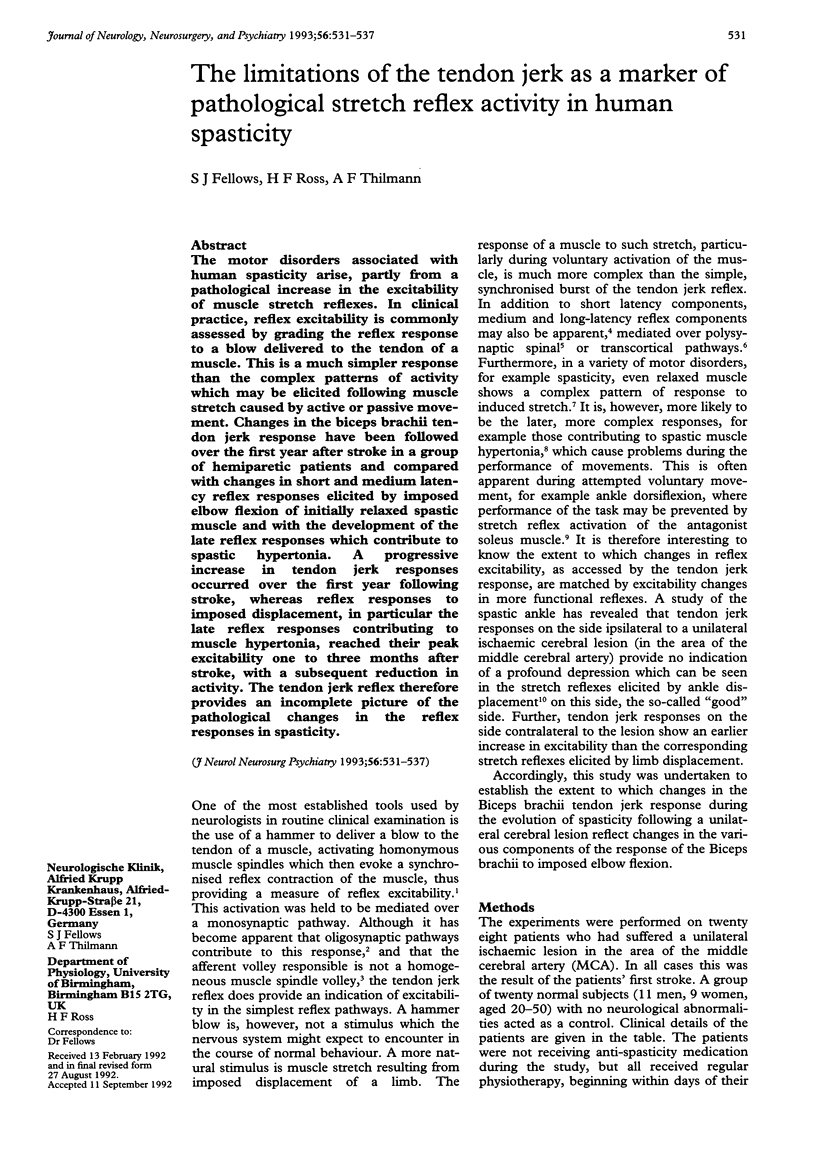
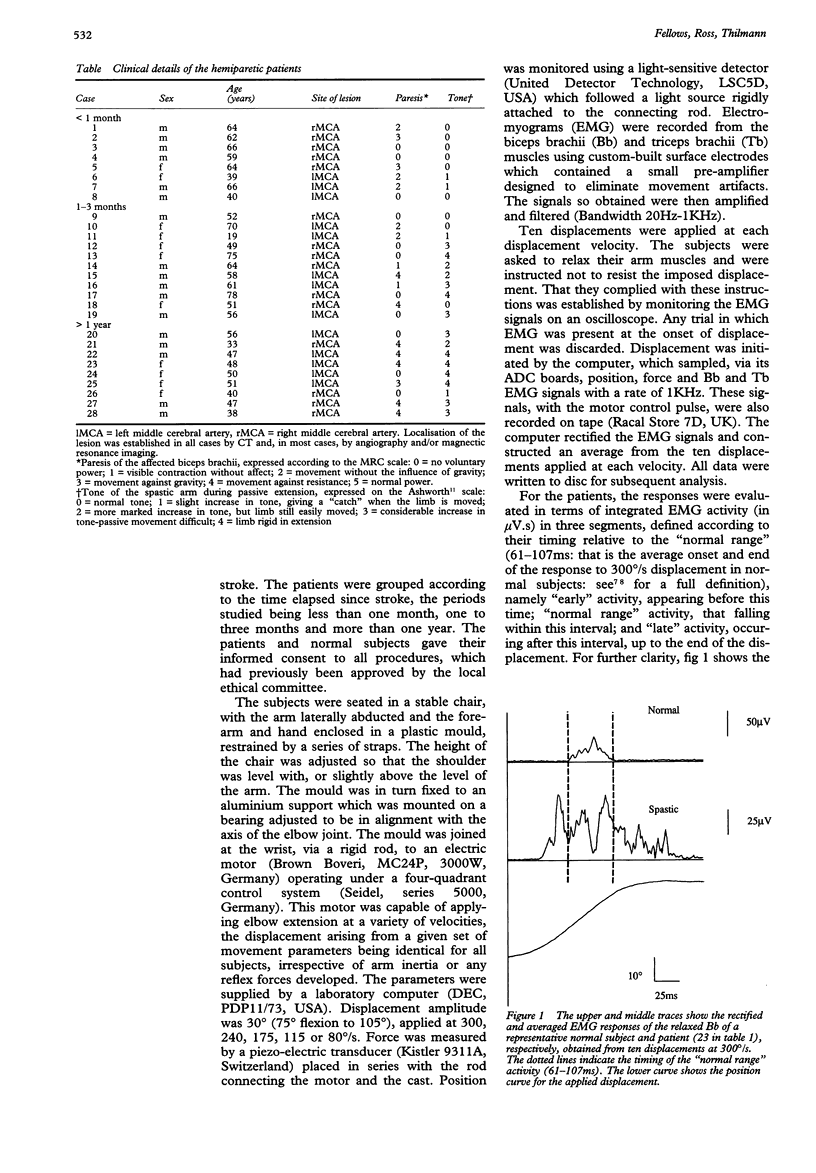
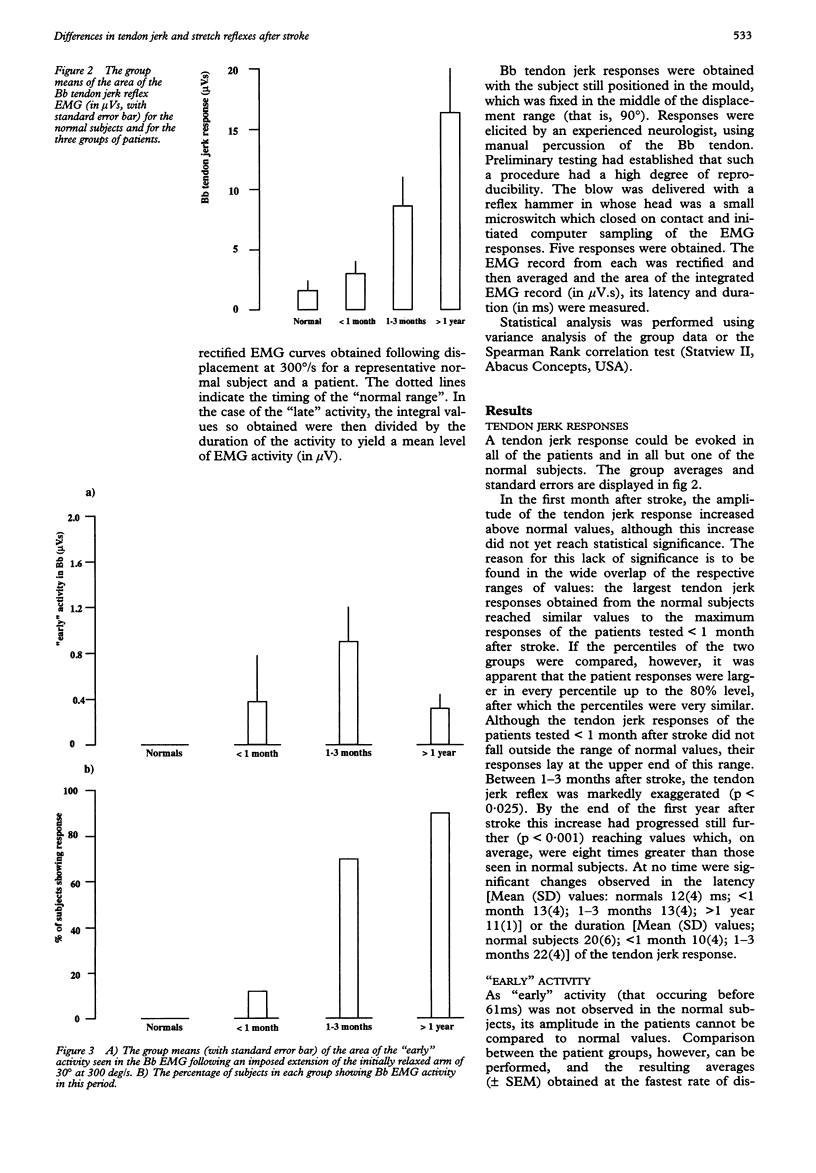
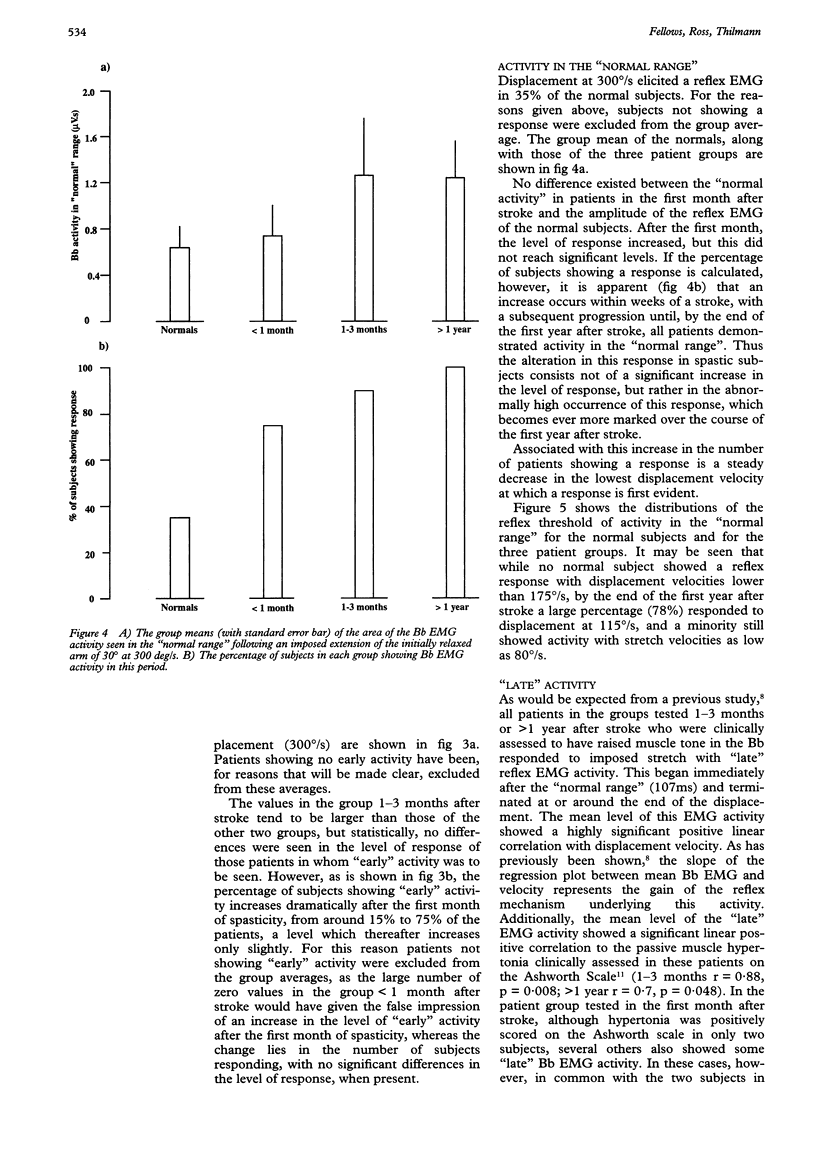
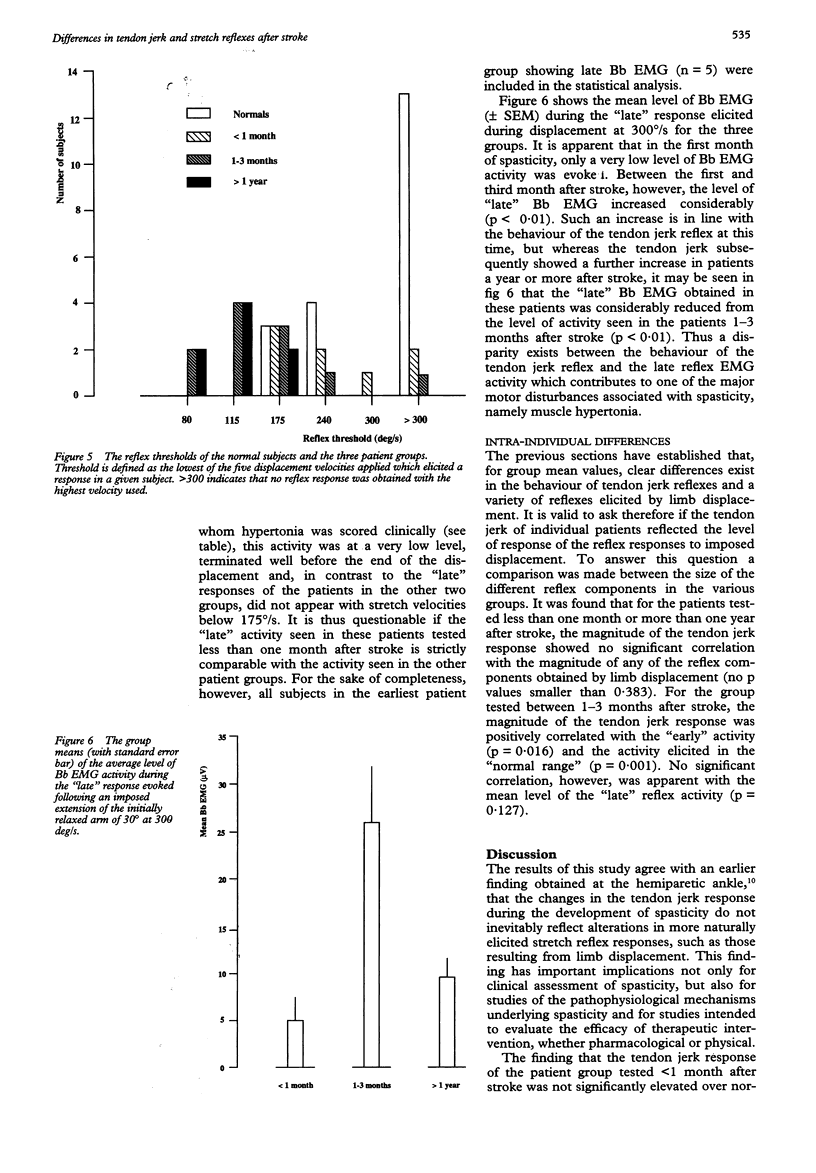
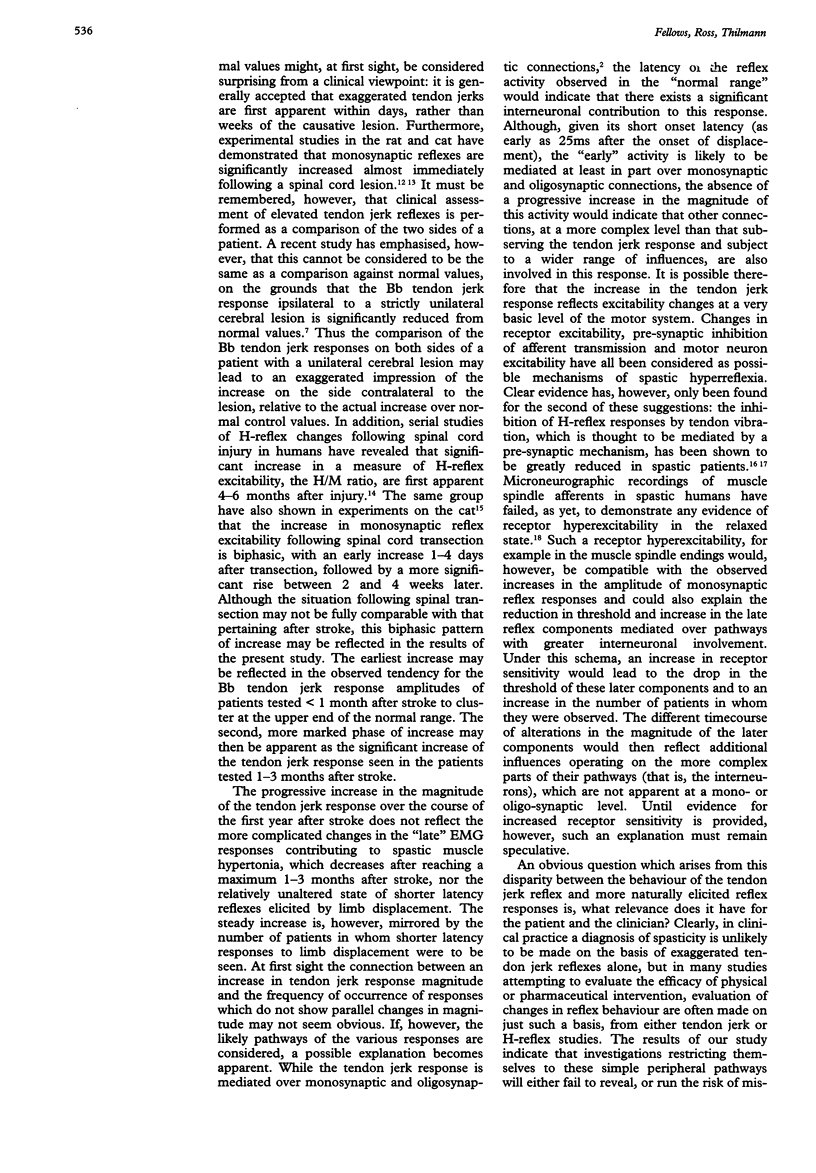
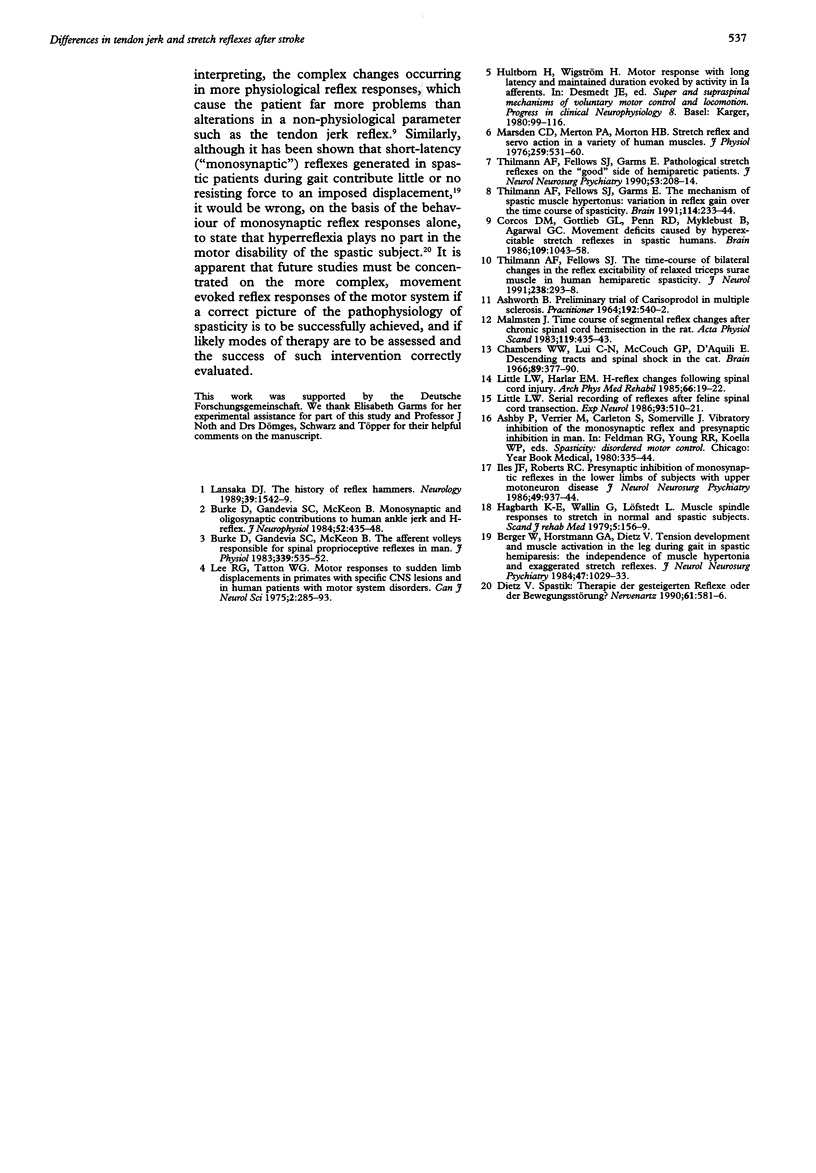
Selected References
These references are in PubMed. This may not be the complete list of references from this article.
- ASHWORTH B. PRELIMINARY TRIAL OF CARISOPRODOL IN MULTIPLE SCLEROSIS. Practitioner. 1964 Apr;192:540–542. [PubMed] [Google Scholar]
- Berger W., Horstmann G., Dietz V. Tension development and muscle activation in the leg during gait in spastic hemiparesis: independence of muscle hypertonia and exaggerated stretch reflexes. J Neurol Neurosurg Psychiatry. 1984 Sep;47(9):1029–1033. doi: 10.1136/jnnp.47.9.1029. [DOI] [PMC free article] [PubMed] [Google Scholar]
- Burke D., Gandevia S. C., McKeon B. Monosynaptic and oligosynaptic contributions to human ankle jerk and H-reflex. J Neurophysiol. 1984 Sep;52(3):435–448. doi: 10.1152/jn.1984.52.3.435. [DOI] [PubMed] [Google Scholar]
- Burke D., Gandevia S. C., McKeon B. The afferent volleys responsible for spinal proprioceptive reflexes in man. J Physiol. 1983 Jun;339:535–552. doi: 10.1113/jphysiol.1983.sp014732. [DOI] [PMC free article] [PubMed] [Google Scholar]
- Chambers W. W., Liu C. N., McCouch G. P., D'Aquili E. Descending tracts and spinal shock in the cat. Brain. 1966 Jun;89(2):377–390. doi: 10.1093/brain/89.2.377. [DOI] [PubMed] [Google Scholar]
- Corcos D. M., Gottlieb G. L., Penn R. D., Myklebust B., Agarwal G. C. Movement deficits caused by hyperexcitable stretch reflexes in spastic humans. Brain. 1986 Oct;109(Pt 5):1043–1058. doi: 10.1093/brain/109.5.1043. [DOI] [PubMed] [Google Scholar]
- Dietz V. Spastik: Therapie der gesteigerten Reflexe oder der Bewegungsstörung? Nervenarzt. 1990 Oct;61(10):581–586. [PubMed] [Google Scholar]
- Hagbarth K. E., Wallin G., Löfstedt L. Muscle spindle responses to stretch in normal and spastic subjects. Scand J Rehabil Med. 1973;5(4):156–159. [PubMed] [Google Scholar]
- Iles J. F., Roberts R. C. Presynaptic inhibition of monosynaptic reflexes in the lower limbs of subjects with upper motoneuron disease. J Neurol Neurosurg Psychiatry. 1986 Aug;49(8):937–944. doi: 10.1136/jnnp.49.8.937. [DOI] [PMC free article] [PubMed] [Google Scholar]
- Lanska D. J. The history of reflex hammers. Neurology. 1989 Nov;39(11):1542–1549. doi: 10.1212/wnl.39.11.1542. [DOI] [PubMed] [Google Scholar]
- Lee R. G., Tatton W. G. Motor responses to sudden limb displacements in primates with specific CNS lesions and in human patients with motor system disorders. Can J Neurol Sci. 1975 Aug;2(3):285–293. doi: 10.1017/s0317167100020382. [DOI] [PubMed] [Google Scholar]
- Little J. W., Halar E. M. H-reflex changes following spinal cord injury. Arch Phys Med Rehabil. 1985 Jan;66(1):19–22. [PubMed] [Google Scholar]
- Little J. W. Serial recording of reflexes after feline spinal cord transection. Exp Neurol. 1986 Sep;93(3):510–521. doi: 10.1016/0014-4886(86)90171-8. [DOI] [PubMed] [Google Scholar]
- Malmsten J. Time course of segmental reflex changes after chronic spinal cord hemisection in the rat. Acta Physiol Scand. 1983 Dec;119(4):435–443. doi: 10.1111/j.1748-1716.1983.tb07359.x. [DOI] [PubMed] [Google Scholar]
- Marsden C. D., Merton P. A., Morton H. B. Stretch reflex and servo action in a variety of human muscles. J Physiol. 1976 Jul;259(2):531–560. doi: 10.1113/jphysiol.1976.sp011481. [DOI] [PMC free article] [PubMed] [Google Scholar]
- Thilmann A. F., Fellows S. J., Garms E. Pathological stretch reflexes on the "good" side of hemiparetic patients. J Neurol Neurosurg Psychiatry. 1990 Mar;53(3):208–214. doi: 10.1136/jnnp.53.3.208. [DOI] [PMC free article] [PubMed] [Google Scholar]
- Thilmann A. F., Fellows S. J., Garms E. The mechanism of spastic muscle hypertonus. Variation in reflex gain over the time course of spasticity. Brain. 1991 Feb;114(Pt 1A):233–244. [PubMed] [Google Scholar]


